Drought tolerant edibles
PedroVanGogh
12 years ago
Related Stories

GARDENING GUIDES10 Drought-Tolerant Shrubs That Thrive in Full Sun and Reflected Heat
Got a hot spot in your garden where plants often die? Try these tough shrubs that add beauty while shrugging off the heat
Full Story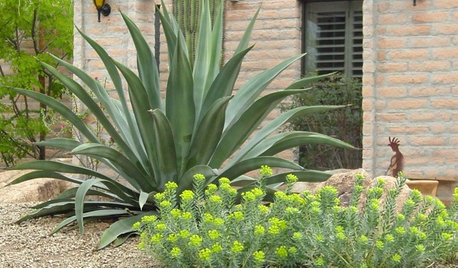
GARDENING GUIDESHow to Spot a Drought-Tolerant Plant
Label? Who needs a label? Learn the characteristics of plants that can thrive in hot, dry conditions to help you pick the right ones
Full Story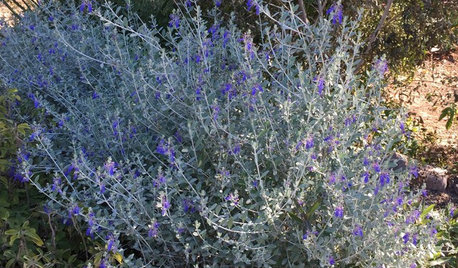
GARDENING GUIDESGreat Design Plant: Teucrium Fruticans for Drought-Tolerant Gardens
The silvery-gray foliage and blue flowers of this Mediterranean native stand out in low-water landscapes
Full Story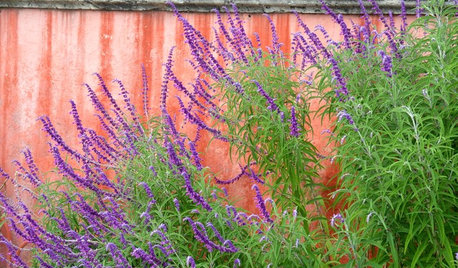
GARDENING GUIDES10 Plants for Colorful Fall Blooms in the Drought-Tolerant Garden
Want fall color but not a big water bill? Consider these not-too-thirsty fall bloomers
Full Story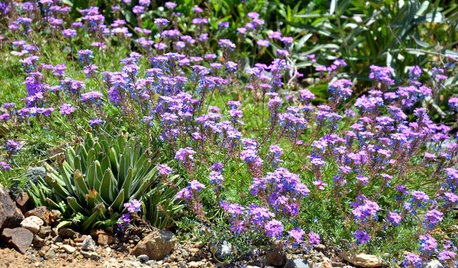
FLOWERS AND PLANTSGlandularia Pulchella Trails Color Through the Drought-Tolerant Garden
Masses of purple blossoms and finely textured foliage cover the ground of arid gardens from spring to fall
Full Story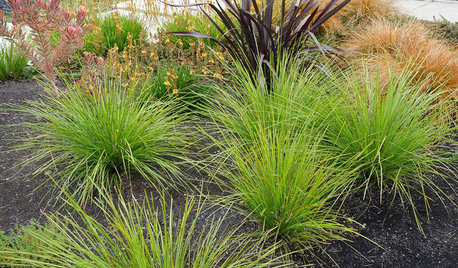
GRASSESVersatile Breeze Mat Rush Sails Into Drought-Tolerant Yards
Grassy Lomandra longifolia thrives year-round in shady and sunny gardens, in containers and in the ground
Full Story
GARDENING GUIDESEssential Watering Tips for Your Edible Garden
To give your edible plants just what they need, check out these guidelines for how, when and how much to water
Full Story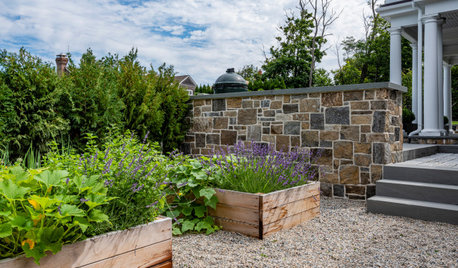
GARDENING GUIDES9 Ways to Be Water-Wise in the Edible Garden
Consider these tips to get a healthy backyard crop that uses less water
Full Story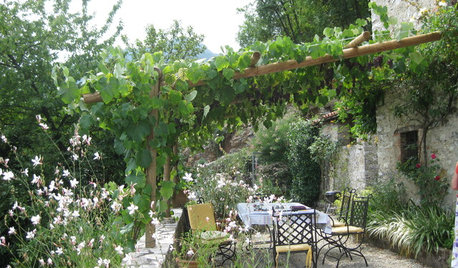
LANDSCAPE DESIGNRecipe for Mediterranean Edible Garden Style
The only thing better than a delicious meal outdoors is the satisfaction of growing some of the key ingredients yourself
Full Story
GARDENING GUIDESYes, You Can Grow an Edible Garden on a Hot, Dry Site
Difficult garden spots don’t need to deter you from planting trees, herbs and other delicious food plants
Full Story





yukkuri_kame
limhyl
Related Professionals
Quincy Landscape Architects & Landscape Designers · Saint Charles Landscape Architects & Landscape Designers · Edmond Landscape Contractors · Aloha Landscape Contractors · Bainbridge Island Landscape Contractors · Lees Summit Landscape Contractors · Petaluma Landscape Contractors · Pompano Beach Landscape Contractors · Ronkonkoma Landscape Contractors · Selma Landscape Contractors · Channahon Carpenters · Odenton Carpenters · Sugar Land Carpenters · Agoura Siding & Exteriors · Germantown Siding & ExteriorsCelestron2000
Celestron2000
edible_garden_NW
Suzi AKA DesertDance So CA Zone 9b
Bradybb WA-Zone8
ediblelandscaping.sc
ediblelandscaping.sc
Suzi AKA DesertDance So CA Zone 9b